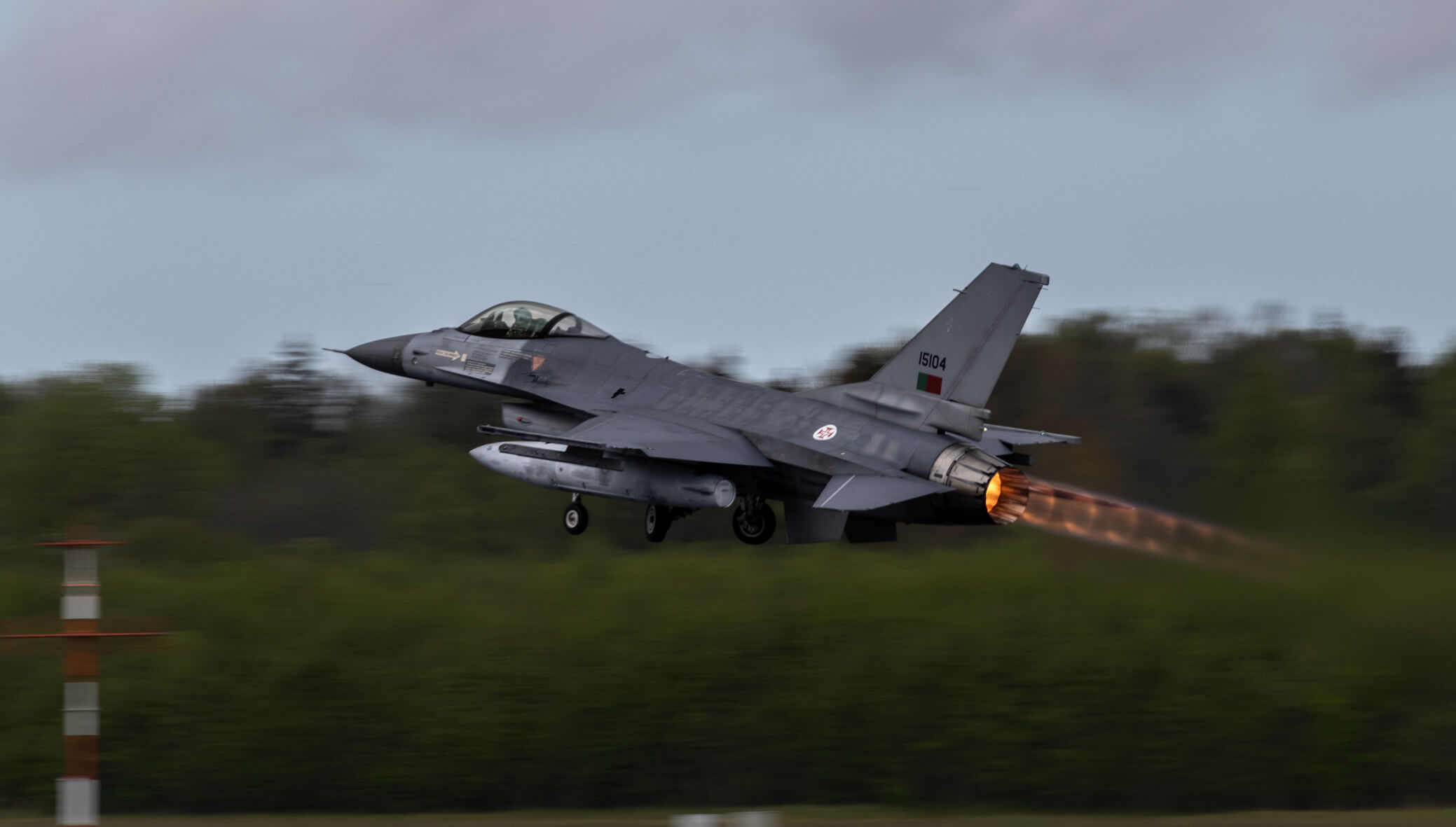The chiefs of general staff from all 32 NATO member states attended a meeting of the NATO Military Committee, the highest military body of the Alliance, held in Riga on 26 and 27 September.
The agenda focused on security challenges on the eastern flank, the status of the air surveillance mission over the Baltic States, and a broader assessment of the security environment.
The host, Latvian President Edgars Rinkēvičs, used the occasion to publicly request that the "air policing" mission be upgraded to full air defence.
This formalised a discussion ongoing in the region for months: can NATO rely on a framework created in a more peaceful era, when incidents were rare and mostly symbolic, or is a systemic change needed to match the current frequency of incidents?
From patrolling to defence
"Air policing" is designed as a peacetime mission: fighter jets patrol, identify aircraft entering the airspace, and, if necessary, escort them out. The rules of engagement do not provide for automatically open fire.
This approach made sense when the threat was limited to occasional overflights or shows of force.
Today, the situation has changed. The Baltic countries and Poland are recording increasingly frequent incursions by Russian drones and military aircraft.
The concept of patrolling loses its effectiveness
At the same time, unmarked aircraft are appearing, combining reconnaissance and psychological effects.
In this context, the concept of patrolling loses its effectiveness. A network of permanent ground-based air defence systems, anti-drone capabilities, faster data exchange, and clearer rules for the use of force are needed.
The request from Riga is not semantic but operational. The transition to defence requires changes to architecture, procedures, and budgets.
Incidents that precipitated the debate
Ahead of the meeting in Riga, several incidents were recorded in the region. Warsaw and the Baltic capitals reported airspace violations.
Denmark temporarily restricted the use of civilian drones during periods of increased risk, and Lithuania has legally authorised the military to shoot down unidentified drones.
National authorities no longer believe threats can be managed through improvisation and existing procedures
These measures indicate that national authorities no longer believe threats can be managed through improvisation and existing procedures.
This context explains why Latvia is using the opportunity to urge NATO to commit to systemic change.
Positions of the Alliance
Official statements from NATO headquarters and Admiral Cavo Dragone were circumspect. It was emphasised that it was too early to change the formal framework of the mission until investigations into specific incidents were completed.
This is a diplomatic way to acknowledge the problem while leaving room for negotiations between members.
However, it is clear from the dynamics of the meeting that adjustments will be made.
While a formal mission change requires unanimous agreement, operational changes can be introduced quietly
While a formal mission change requires unanimous agreement, operational changes can be introduced quietly: a denser network of radars and sensors, more anti-drone systems at airports and critical points, and faster communication between national authorities and NATO commands.
These measures do not require political ceremony and have a direct effect on reducing risk.
Economic dimension
The Baltic demand is not only about security; it also has a financial logic. Drones that violate airspace often cost only a few thousand euros. Countering such threats with fighter jets or high-cost missiles is not sustainable.
If the mission is redefined as defence, it means establishing a multi-layered system: cheaper and medium-range solutions on the ground, with more rational use of expensive resources.
Otherwise, NATO will spend more on the response than the attacker spends on causing the incident. Riga has initiated this debate — how to make protection sustainable in the long term.
The Baltic initiative as a test
Latvia and its neighbours raise a question that concerns the entire Alliance: does NATO wish to remain in the improvisation zone or move to a regime in which the rules of engagement keep pace with contemporary threats?
 The issue of “air policing” becomes a measure of the credibility of collective defence
The issue of “air policing” becomes a measure of the credibility of collective defence
The Baltic request is not merely a local concern but a test of the Alliance’s readiness to adapt its rules and capacities to new threats.
NATO must achieve a balance. If every airspace violation automatically leads to escalation, the risk of unintended consequences increases.
If the existing framework is maintained, the problem will not remain regional. Each new incident in the Baltics tests confidence in NATO as a whole, especially among those members who rely on the Alliance’s guarantees as their first and last line of security.
Thus, the issue of “air policing” becomes a measure of the credibility of collective defence.
What is next?
It is certain that the coming months will bring a denser distribution of sensors, more joint exercises, and clearer internal procedures for neutralising drone threats.
Formally changing the status of the mission from “patrolling” to “defence” is likely to require more time and political negotiation.
The meeting in Riga showed that NATO can no longer postpone serious questions about its eastern flank
However, de facto change is already occurring: when a national parliament, such as Lithuania’s, gives the military the right to shoot down drones, the threshold of tolerance shifts and sends a signal to both partners and adversaries.
The meeting in Riga showed that NATO can no longer postpone serious questions about its eastern flank. The Baltic countries have articulated a demand that reflects reality, not just regional fear.
The Alliance will try to balance avoiding formal escalation with ensuring operational security.
If the discussion results in concrete action in the coming months, Riga will be remembered as the place where the Alliance began its transition from improvisation to systemic defence.
If not, the risk remains that the next incident—whether involving a drone or an aircraft—will turn failure into a serious crisis of confidence in NATO’s ability to protect its own members.